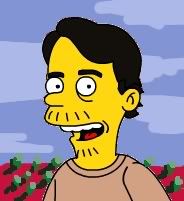Running in the street conveys an impression of terror. The victims fall is already mimed in his attempt to escape it. The position of the head, trying to hold itself up, is that of a drowning man, and the straining face grimaces as if under torture. He has to look ahead, can hardly glance back without stumbling, as if treading the shadow of a foe whose features freeze the limbs. Once people ran from dangers that were too desperate to turn and face, and someone running after a bus unwittingly bears witness to past terror. Traffic regulations no longer need allow for wild animals, but they have not pacified running. It estranges us from bourgeois walking. The truth becomes visible that something is amiss with security, that the unleashed powers of life, be they mere vehicles, have to be escaped. The body's habituation to walking as normal stems from the good old days. It was the bourgeois form of locomotion: physical demythologization, free of the spell of hieratc pacing, roofless wandering, breathless flight. Human dignity insisted on the right to walk, a rythm not extorted from the body by command or terror. The walk, the stroll, were private ways of passing time, the heritage of the feudal promenade in the nineteenth century. (Theodor Adorno)
Critic’s Notebook: Early Music Days Resonanzen Open with Jordi Savall and
Les Musiciennes du Concert des Nations
-
Also reviewed for Die Presse: Jordi Savall im Konzerthaus: Zeitreise in die
Ära des Langeweile-Vivaldis A. Vivaldi Le quattro stagioni R.Alessandrini,
conc...
Há 10 horas



















Sem comentários:
Enviar um comentário